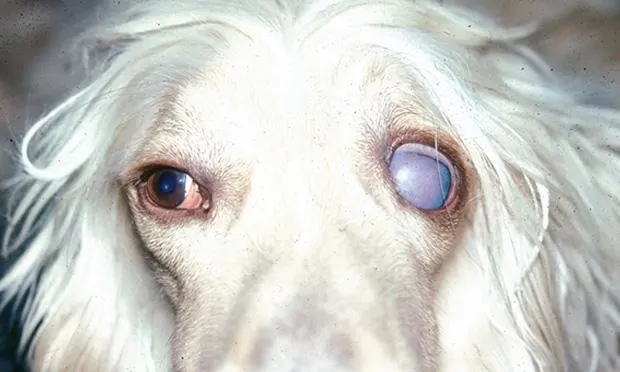The Bulging Eye

Bulging eyes are usually unilateral; gross observation from multiple angles can help delineate between proptosis, exophthalmos, or buphthalmos. Both globe and orbit will appear symmetrical with proptosis. With exophthalmia, the globe appears symmetrical; the orbit does not. Buphthalmic eyes will have an abnormal globe and normal orbit.
Proptosis occurs acutely after trauma. The globe moves forward from the eyelids and eyelid margins will not be visible 360o around the eyeball. Brachycephalic breeds are more predisposed but have better prognosis for maintaining vision. Severity of ocular muscle tearing and optic nerve damage generally determine prognosis. In addition, time from trauma to globe replacement impacts prognosis for vision. Surgical treatment (globe replacement or enucleation) is indicated. If more than 2 ocular muscles are torn, enucleation is generally recommended. Prognosis is poor if the cornea is facing superiorly or inferiorly or if intraocular hemorrhage is present.
In exophthalmia, the globe is pushed forward, usually due to an orbital space-occupying process (eg, abscess, neoplasia). CT scan is ideal for diagnosis and, with neoplasia, must be used to determine its extent. Cellulitis and abscesses are treated based on clinical signs. Long-term prognosis for orbital neoplasia is poor. In rare cases, exophthalmia may be caused by myositis (presumably immune-mediated).
Buphthalmia is an enlarged globe, typically due to unilateral glaucoma. Bilateral cases are likely secondary glaucoma caused by systemic disease. Comparison of globe symmetry, shape, and intraocular pressure are necessary for diagnosis. The underlying cause of increased ocular pressure will determine treatment.